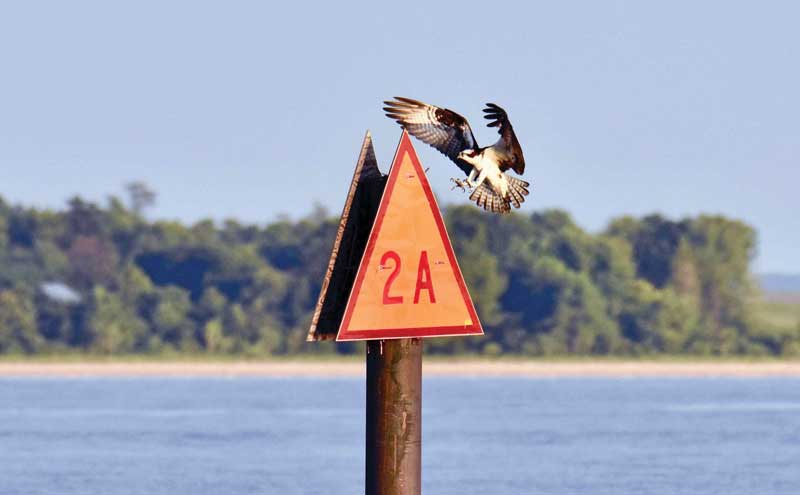Spring means different things to different people. For some it may mean cultivating a garden, playing baseball, or flying a kite. For boaters we mark the season removing tarps and shrinkwrap, burning our socks, and commissioning our boats.

In the natural world, other signs herald the new season. Fickle daffodils that popped up before the last snowfall begin to grow in earnest. Birds that migrated to warmer climes return to the Bay. Tundra swans head north, and all types of creatures begin their spring mating rituals.
This year the first day of spring in the northern hemisphere will be March 19. Also known as the spring or vernal equinox, this is the day on which the sun crosses the celestial equator going south to north.
For some expert advice on signs of spring we may expect to see and hear along the shoreline, Team PropTalk checked in with Sarah Witcher, an education specialist and wildlife ecologist with Maryland Wildlife and Heritage Services, part of Maryland’s Department of Natural Resources. Here are more signs of spring that you’ll notice if you keep your eyes and ears open.
Birds: Osprey are one of the earliest birds to return to this area from their winter down south, usually the Caribbean, Central, and South America. We often see them in early March. Along with other raptors such as the bald eagle, osprey will begin mating when they return. Witcher says if you see two eagles engaged in a fantastic aerial dance, it is part of their mating ritual.
Amphibians: Guess who else is mating—and making a lot of noise about it: frogs. Wood frogs and spring peepers will be hanging out and having a spring party says Witcher. You’ll hear their calls as they come out of hibernation to breed and lay eggs in the wetlands. Their noisy sounds are the males calling to females. Wood frogs make a quacking sound and peepers, well, they peep!
Plants: Most trees and plants begin their new growth based on the hours of sun and the temperature. In coastal areas one common native wetland plant that comes to life in early spring is wild rice. Eventually its stem grows up to 10 feet tall with a feathery flower on top, but in early spring what you’ll notice is a bit of green among its dead remnants. On the invasive side, phragmites, also known as common reed, is a perennial grass often found in freshwater and brackish wetlands around the Bay. While beautiful, it can displace native plants and animals. It too will have sprouts of green among its weathered stems from the previous year. Finally, a smaller wetland plant to keep a lookout for is skunk cabbage. Later in the season it will have a pretty yellow flower and give off a stinky smell (hence the name), but right now look for new growth from its reddish bulb.
What is your favorite Chesapeake-region sign of spring? Send your answer to [email protected].